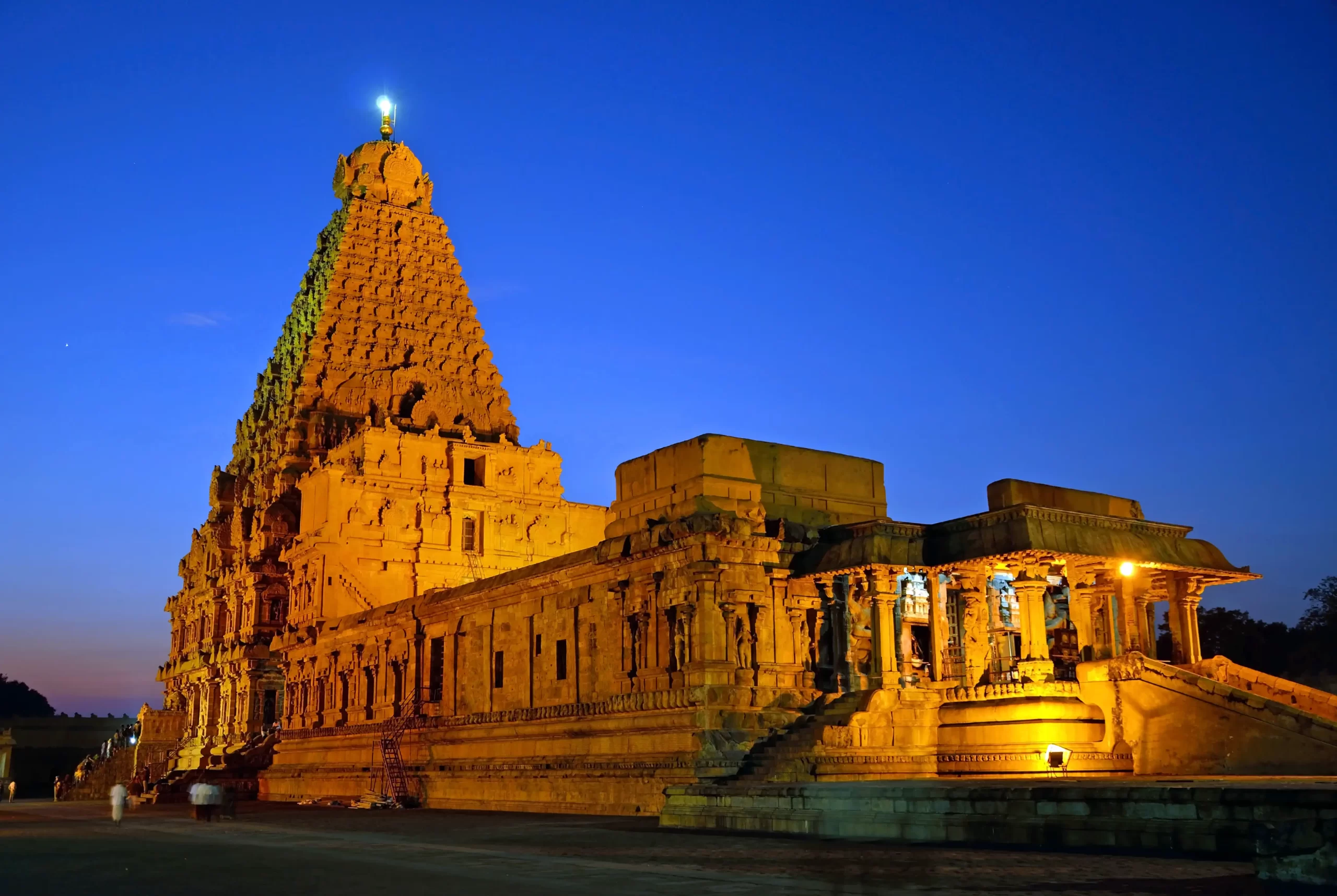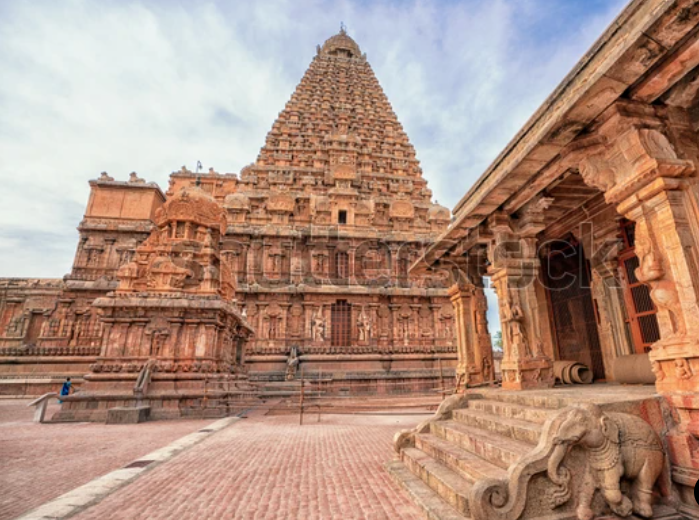Introduction to Thanjavur
In mediaeval India, towns served as the centre of each empire. In the ninth century, large towns and cities began to appear. Large emirates like the Cholas, Chalukyas, and Pallavas ruled at that time. Each kingdom featured several cities, which were divided into categories based on their functions. Some towns served as administrative centres, where monarchs and nobles lived and oversaw all administrative operations. Other classifications included commercial, port, temple, and other types of towns. The majority of towns had a market and were defended. Due to the fact that cities were one of the kingdom’s main sources of income, the monarchs gave them particular protection. Towns occasionally served more than one purpose. Thanjavur served as the Chola empire’s administrative centre and a popular pilgrimage destination because of the several well-known temples and shrines that were located there.
Administrative Centres
Vijayalaya established the Chola kingdom in the year 850 CE. One of the strongest kingdoms at the period was the Chola empire. All of southern India, Sri Lanka, and the Maldives came under its rule. Thanjavur had been taken from the Pallavas by Vijayalaya. Rajaraja and Rajendra Chola were the greatest kings of the Chola kingdom.
Thanjavur was chosen as the Cholas’ capital. To commemorate their conquests, the Chola monarchs erected several temples. The Rajarajeshwar and Brihadeshwara temples, which Rajaraja Chola erected, are two of the most well-known temples. King and queen sculptures and images were frequently erected on the grounds of temples by the Cholas.

The administrative zones of Thanjavur, Thiruvaiyaru, Pattukkottai, and Peravurani are separated by Thanjavur, which serves as the district’s administrative centre. Each zone has a number of cities and villages under its control. The Thanjavur Municipal Corporation, which manages the city’s civic administration, is also based in the city.
Temple Towns and Pilgrimage Centers
Towns that were constructed around a particular temple were known as temple towns. These towns were often guarded, and social and economic activity were tied to the temples. Thanjavur is a model temple town in every way. It is centred on the Brihadeshwara temple, which Rajaraja Chola constructed in the eleventh century. The Chola empire’s capital was the town of Thanjavur.
Kings built temples to honour their victories and to show their adoration for the gods. Grants and lands were given to the temples. Temples were given permission to manage their own affairs, collect taxes from the surrounding area, and perform rituals, festivals, and provide food for pilgrims. Additionally, travellers and nobility gave donations to the temples.
Temple towns and pilgrimage centres are significant religious destinations that attract a large number of devotees and tourists from all over the world. A temple town is a city or a town that is primarily known for its numerous temples, which are the major tourist attractions. These temple towns are often considered to be sacred sites, and they have a rich cultural and religious heritage. Thanjavur, also known as Tanjore, is a prominent temple town in Tamil Nadu, India, known for its Brihadeeswara Temple, which is a UNESCO World Heritage Site.
Pilgrimage centres, on the other hand, are places that are considered holy and are often associated with specific religious beliefs or practices. These centres attract a large number of devotees who come to offer prayers, seek blessings and participate in various religious rituals. Some of the famous pilgrimage centres in India include the Char Dham Yatra, the Kumbh Mela, and the Amarnath Yatra.
Overall, temple towns and pilgrimage centres play a vital role in the religious and cultural life of people, and they contribute significantly to the tourism industry in the country.
Thanjavur is home to several temple towns and pilgrimage centres that attract devotees from all over the world. Some of the famous ones are:
Brihadeeswarar Temple – The Lord Shiva-dedicated temple is a UNESCO World Heritage Site. It is renowned for its 12-foot-tall statue of Nandi and its imposing gopuram (gateway tower). (the bull).

The Thiruvanaikaval Temple – It is situated near Trichy, 55 km away from Thanjavur. It is devoted to Lord Shiva and is renowned for the rock-cut cave temple and its underground water streams.
Navagraha Temples – Thanjavur is home to a number of temples honouring the nine celestial bodies, or navagrahas. The “City of Temples” in Kumbakonam is where the temples are situated.
Alangudi Temple – The Lord Guru (Jupiter) temple at Alangudi, which is 45 km from Thanjavur, is devoted to him. It is thought to be among the nine Navagraha temples.
Summary
Numerous new kingdoms and empires led to the establishment of numerous towns and cities. In mediaeval India, many types of cities existed. Some of them were towns with administrative, commercial, port, or temple towns. Based on these qualities, towns were classified. When some people began progressively gathering close to the temple, the town of the temple was born. Priests, labourers, artisans, and anybody else who provided services to pilgrims and looked after temple management comprised these villages. India’s eighth-century temple town was called Thanjavur. The Kingdom of Chola founded it, and it went on to become one of India’s most well-known towns. In addition to serving as an administrative town, Thanjavur also served as a temple town. People from neighbouring villages also benefited from the trade as Thanjavur’s market expanded. Kings gave temples grants, and they also possessed their own land that allowed them to levy taxes on.
Frequently Asked Questions
Q.1 How did temples affect urbanisation?
People made pilgrimages to temples on a regular basis, and certain communities—priests, craftspeople, workers, etc.—lived close to the temples to serve the needs of the pilgrims. The neighbourhood came together, and over time, it expanded and took the shape of a town. These towns were significant for trade and business.
Q2. What Thanjavur temple towns are well-known?
Particularly its temple towns, Thanjavur is renowned for its extensive cultural and architectural history. The most well-known temple towns in Thanjavur are Pattukkottai, Kumbakonam, Darasuram, Thiruvaiyaru, and Gangaikonda Cholapuram.
Q3. What purpose do the pilgrimage sites serve in Thanjavur?
For millennia, Thanjavur has been a significant hub for Hinduism and Jainism, with several pilgrimage sites drawing tens of thousands of pilgrims each year. These places, which are admired for their beautiful temples, festivals, and ceremonies, are said to be of spiritual importance.
 Mission Statement
Mission Statement
“Empower every student to achieve full potential”
88Guru has been established with the social objective of making quality video-based learning material available to all Indian students. Technology, Connectivity and Social Media are rapidly changing the world of Education and we wish to lead the transformation of the tuition industry in India.
88Guru is the perfect complement to the current tuition model. 88Guru creates a wonderful opportunity for children and parents to bond while engaging in a valuable learning activity. It also provides the complete curriculum at your fingertips for those moments when you need some help at short notice. We believe that this mode of tuition could be transformational, adding hours to a child's day while providing complete control over the learning process.
Every course is taught by the best teachers from India's top schools and conducted in an engaging manner to keep students involved. The e-learning process consists of video-based instructions, computer-graded assignments, and a dashboard which allows the student and parent to track progress.


